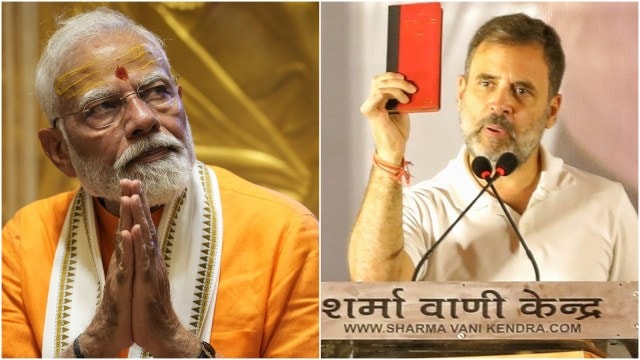
What is the most debated issue in the fiercely contested Lok Sabha elections that are underway? On one side is Mr Narendra Modi and a few allies. On the other side is a multi-pronged challenge spearheaded by Mr Rahul Gandhi and powerful and independent state-specific commanders.
Each of the challengers has raised vital issues — unemployment, inflation, communal divide, inequality, weaponisation of laws and misuse of investigation agencies, crimes against women, Chinese troops occupying Indian territory, discrimination in the devolution of funds and subjugation of the media. Mr Modi dismissed these issues as distractions. He deftly side-stepped them, clean bowled the combined opposition a la Mr Jasprit Bumrah, and set the narrative with a truly inspired idea — inheritance tax on buffaloes. I suspect the idea was born out of years of research into ‘entire political science’. There is a nation-wide animalated — sorry, animated — debate on the question, ‘Will the Union finance minister levy an inheritance tax on buffaloes?’ Let me try to enrich the debate.
Taxes on animals
The fundamental question that will arise is, whether the levy of such a tax by the Union government would be constitutional? Entry 58 of List II of the Seventh Schedule reads “Taxes on animals and boats.” Prima facie, the power to levy a tax on animals is reserved to the state governments. Per contra, the central government may justify the tax under Entries 86, 87 or 88 of List I that deal with, respectively, tax on capital value of assets, estate duty, and duties in respect of succession to property. In legal jargon, is a buffalo always an animal or, when it is ‘inherited’ or passes through ‘succession’, does the buffalo become an asset? The question may require a Presidential reference to the Supreme Court and a decision by a Constitution Bench. The animal spirits of senior counsel will be in full play.
The Tax Base
The author of the idea said ‘if you have two buffaloes, one will be taken away’, implying that inheritance tax will be levied only on two or more buffaloes and the tax rate may be 50 per cent.
I am afraid the tax is not easy to administer. If there are two buffaloes, which buffalo will be taxed and snatched by the tax collector? If both are of the same gender and colour, she may pick any one as long as she was not caught in the dilemma faced by Buridan’s ass (read: buffalo) and died of exhaustion. However, of the two buffaloes, if one is a ‘he ‘ and the other is a ‘she’ which one will she choose? Moreover, buffaloes come in at least four colours — grey, black, white and black-brown. Suppose the two buffaloes are black and white, which one will the tax collector choose? The Central Board of Direct Taxes may be required to frame rules to avoid the charge of gender bias or racial prejudice. Furthermore, a peculiar problem will arise if the estate consists of an odd number of buffaloes: how will the tax collector apply the 50 per cent rate and avoid the charge of buffalo slaughter?
Rate of Tax
The author proposed a tax rate of 50 per cent. Will the law not be vulnerable to challenge because the rate is, prima facie, confiscatory? If the current rates of corporate tax (15, 22 or 30 per cent) or the personal income tax rates (up to 42.8 per cent) are applied, a neat and elegant tax conceived by the author will become a convoluted one like the Gabbar Singh Tax (GST), and the buffalo tax will be universally detested. The debate on the rate alone may consume several days in Parliament.
The Charging Section
The charging section is the essence of a tax law. The draftsperson will face several difficulties in choosing the appropriate words. Eventually, the CBDT may have to adopt a buffalo-headed approach, summarily reject the various objections and settle on a text fully conscious of the possibility that the charging section will be challenged in the Courts on various grounds.
Unique Tax?
The author contemplated the inheritance tax on buffaloes as a unique tax at a uniform rate of 50 per cent. Most definitely, he did not propose an inheritance tax on all the assets of the deceased. Presumably, he thought that the buffalo deserved a special treatment. In Indian mythology, Yama, the god of death, comes riding on a buffalo. It would be sacrilege if Yama’s divine vehicle is clubbed with vehicles like car or bike or cycle invented by mortal humans. In case the tax-hungry CBDT succeeded in persuading the finance minister to impose an inheritance tax on all the assets of the deceased, the buffalo will be clubbed with other taxable assets and the inheritance tax on buffaloes may become a ‘progressive’ tax relatable to the wealth-slab of the deceased.
Buffalo is the Future
Mr Narendra Modi is known for his profound knowledge of public finance, especially the principles of taxation. He has proposed a revolutionary tax that will pave the way for future tax innovations. To milk the cash-buffalo, the central government may launch a new programme to promote buffalo-rearing and provide an initial outlay of Rs 806,000 crore (at the rate of Rs 1000 crore per district of India). Male buffaloes may replace mechanized ploughs for farming, saving diesel. Buffalo manure may replace harmful chemical fertilizers. Buffalo milk may become the milk of choice in India.
I salute the author’s vision of Viksit India. Surpassing other countries, India will have two national animals: the magnificent tiger in the jungle and the multipurpose buffalo in human habitations.


